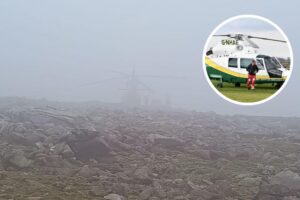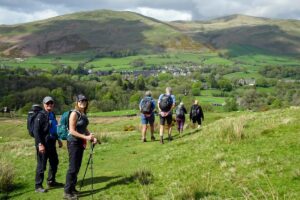“Nature needs chaos, it needs randomness,” says Lee Schofield from the RSPB.
He is sitting on the bank of Swindale Beck, a stretch of river close to Haweswater Reservoir in Cumbria – one of England’s largest lakes.
The chaos – and the nature – has returned to this site after being missing for two centuries.
This is because, about 200 years ago, the community of Swindale embarked on an ambitious project to straighten this section of the beck, with the aim of speeding the flow of water through the valley and increasing the amount of farmland surrounding it.
That had unintended consequences. The faster-flowing water was too swift for fish like salmon and trout to spawn.
And the river carried more sediment downstream, making it murkier. So back in 2016, the RSPB and its partners – including the water company that owns the land – embarked on a remeandering or “rewiggling” project.
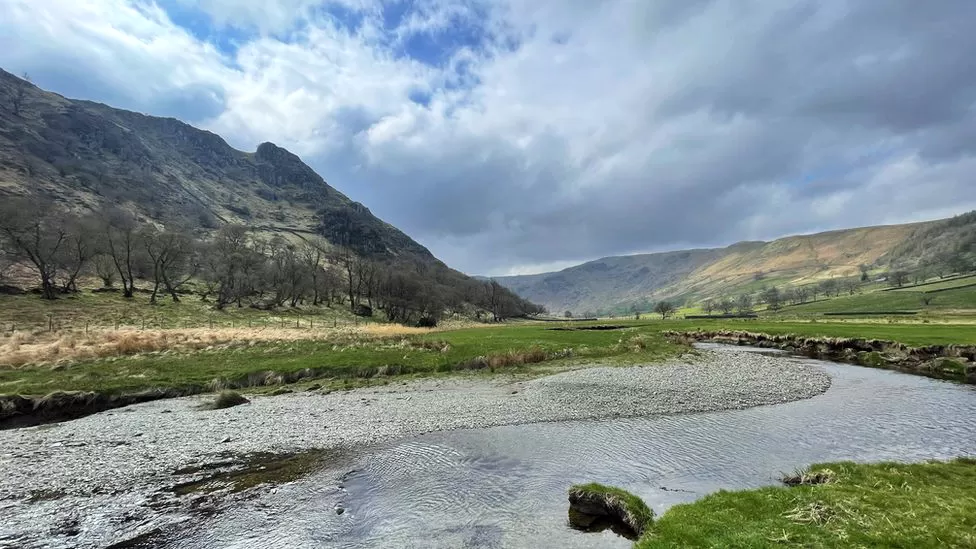
After studying the valley to locate the original path carved out by the river, the charity enlisted a team of diggers to recreate that curvy channel.
It is now about 180m (200 yards) longer than the straight line that had been in the valley bottom for two centuries.
The transformation, says Lee, was almost immediate. “About three months after the diggers left – we had salmon and trout spawning in the river again,” he recalls.
The re-established, meandering curves have slowed down the flow of water, which creates aquatic habitat at each bend.
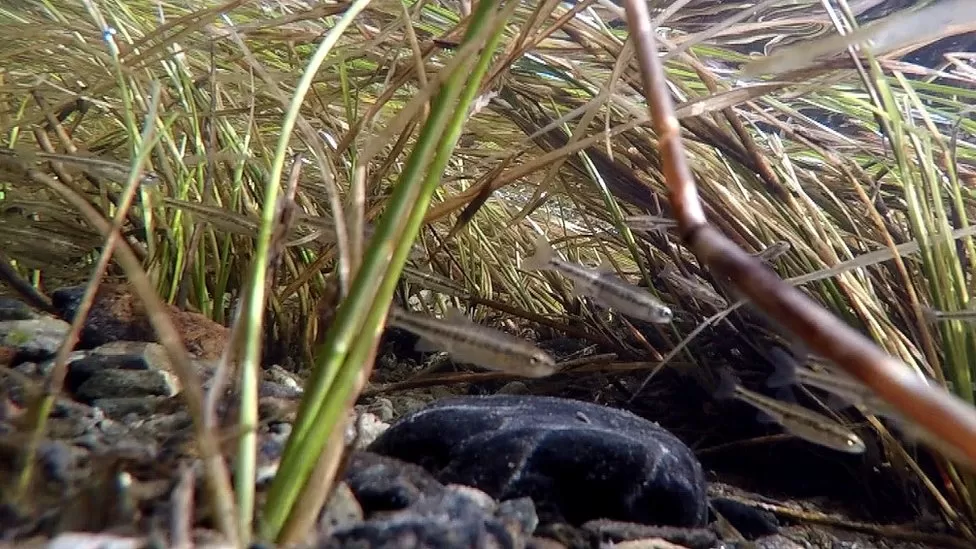
“We now have vegetation in the river, where young fish can shelter,” explained Lee.
“There are gravel banks, deep pools and riffles – shallow, turbulent parts of the river where the water draws in oxygen. It all benefits the whole food chain.
“It’s like a living thing moving through the valley now, while the old, straightened river was just like a sad canal.”
This restoration was expensive. Funded in equal parts by the RSPB, the Environment Agency, Natural England, and the water company landowner, United Utilities, it cost just over £200,000 to rewiggle the 1km (0.6 miles) stretch.
The government is currently funding a number of conservation schemes like this one under what is called the Landscape Recovery Scheme.
Through this, farmers will be able to apply for money to boost biodiversity on their land, possibly by re-wiggling their own rivers or establishing more wild spaces like woodlands.
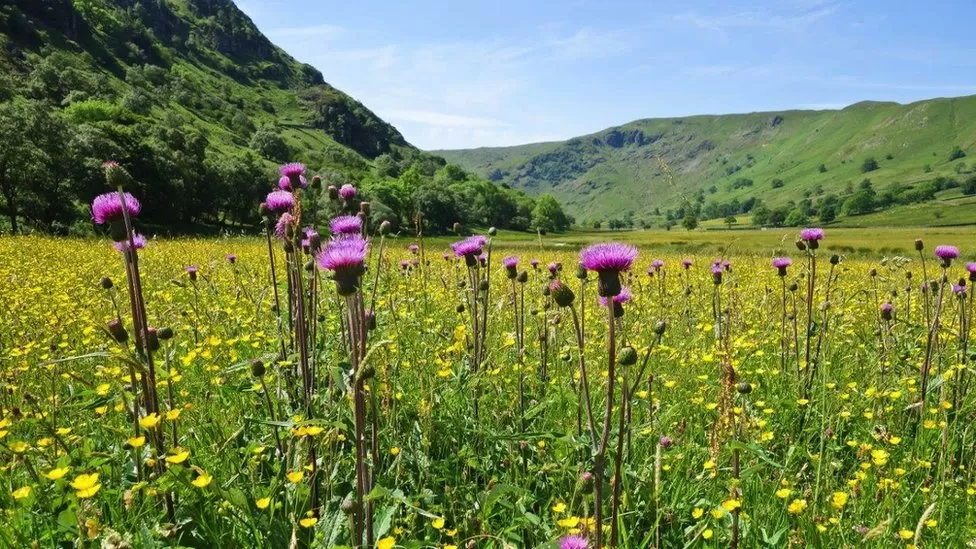
But Alice Groom, the RSPB’s head of sustainable land use policy says more funding is needed if the decline of nature in this country is going to be tackled.
“Last year’s Landscape Recovery pilot was massively oversubscribed,” she says.
“The Government should move swiftly to bring sufficient funding online to match the demand for those groups of farmers and landowners wishing to deliver for nature, climate and water quality.”
For United Utilities, re-wiggling essentially means the river cleans itself.
Artificially straightened rivers flow faster and pick up more sediment. In this case, that is carried downstream to the Haweswater reservoir.
Curves slow down the flow and allow the river to deposit its sediment on the banks.
That slowed flow also reduces the risk of flooding downstream. Somewhat ironically, environmental damage that water companies do in the future could also provide a funding source for restoration projects like this.
Companies could soon face unlimited fines for dumping sewage, under recently announced government plans. Environment Secretary Thérèse Coffey has said that this money would be reinvested into a new water restoration fund and be used for community-led river conservation rewiggling rivers like Swindale Beck not only helps to restore natural habitats but also has additional benefits for the environment and society.
For example, restoring the river’s meandering path has reduced the risk of flooding downstream, making nearby communities more resilient to extreme weather events.
Moreover, healthy rivers can provide multiple ecosystem services such as clean drinking water, recreational opportunities, and climate change mitigation.
The success of the Swindale Beck restoration project demonstrates the importance of understanding the complexities of natural systems and how human interventions can have unintended consequences.
It also highlights the need for collaborative efforts among stakeholders, including government, non-profit organisations, and private companies, to achieve conservation goals.
With the increasing recognition of the value of ecosystem services and the urgency to address biodiversity loss and climate change, funding for conservation schemes like the Landscape Recovery Scheme needs to be increased.
Moreover, water companies should take more responsibility for their environmental impacts and invest in restoration projects as part of their business practices.
The Swindale Beck restoration project serves as an inspiration that with concerted efforts, it is possible to reverse the damage we have done to our natural world and create a more sustainable future.
Andy Halliday is a passionate outdoor enthusiast and an avid camper. He has been exploring the wilderness and camping in the great outdoors for over two decades, and his experiences have inspired him to write about the joys of camping and the beauty of nature.
As a camping enthusiast, he believes that spending time in the wilderness is not just a way to escape the daily grind, but also a way to connect with nature and gain a deeper appreciation for the natural world. Andy has camped in various locations across the country and on two different continents. He has a wealth of knowledge and experience to share with fellow campers.
Through his writing, he hopes to inspire you to venture out into the wilderness and experience the beauty and serenity of camping. Andy articles and guides provide useful tips, advice, and insights on everything from selecting the right gear and equipment to finding the best campsites and hiking trails.


